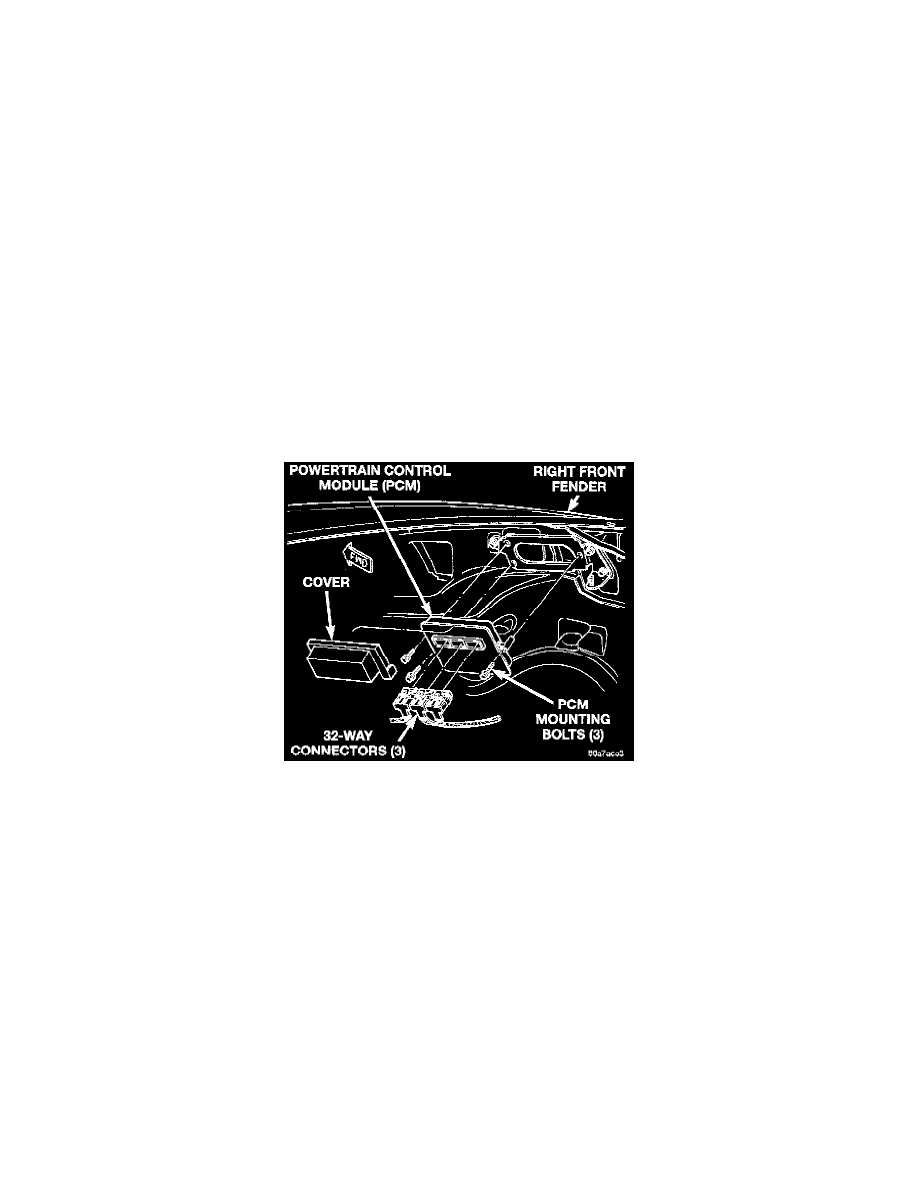Dakota 2WD V6-3.9L VIN X (1997)

Powertrain Control Module: Description and Operation
Five Volt Sensor Supply-Primary
Supplies the required 5 volt power source to the crankshaft position sensor, camshaft position sensor, Manifold Absolute Pressure (MAP) sensor and
throttle position sensor.
Five Volt Sensor Supply-Secondary
Supplies the required 5 volt power source to the transmission pressure sensor and the vehicle speed sensor.
Power Grounds
The power ground is used to control ground circuits for the following powertrain control module (PCM) loads:
-
Generator field winding
-
Fuel injectors
-
Ignition coil
-
Certain relays/solenoids
Sensor Return-PCM Input
Sensor Return provides a low noise ground reference for all system sensors.
Signal Ground-PCM Input
Signal ground provides a low noise ground to the data link connector.
System Description
Fig 1 Powertrain Control Module (PCM)
SYSTEM DIAGNOSIS
The Powertrain Control Module (PCM) can test many of its own input and output circuits. If the PCM senses a fault in a major system, it stores a
Diagnostic Trouble Code (DTC) in its memory.
Technicians can display stored DTC's with different methods. One way is using the DRB scan tool. Another way is using the malfunction indicator
(check engine) lamp. On certain models the vehicle odometer can be used to display the numeric DTC.
POWERTRAIN CONTROL MODULE (PCM)
The powertrain control module (PCM) (Fig. 1) operates the fuel system. The PCM was formerly referred to as the SBEC or engine controller. The
PCM is a pre-programmed, dual microprocessor digital computer. It regulates ignition timing, air-fuel ratio, emission control devices, charging
system, certain transmission features, speed control, air conditioning compressor clutch engagement and idle speed. The PCM can adapt its
programming to meet changing operating conditions.
The PCM receives input signals from various switches and sensors. Based on these inputs, the PCM regulates various engine and vehicle
operations through different system components. These components are referred to as Powertrain Control Module (PCM) Outputs. The sensors
and switches that provide inputs to the PCM are considered Powertrain Control Module (PCM) Inputs.
The PCM adjusts ignition timing based upon inputs it receives from sensors that react to: engine rpm, manifold absolute pressure, engine coolant
temperature, throttle position, transmission gear selection (automatic transmission), vehicle speed and the brake switch.
